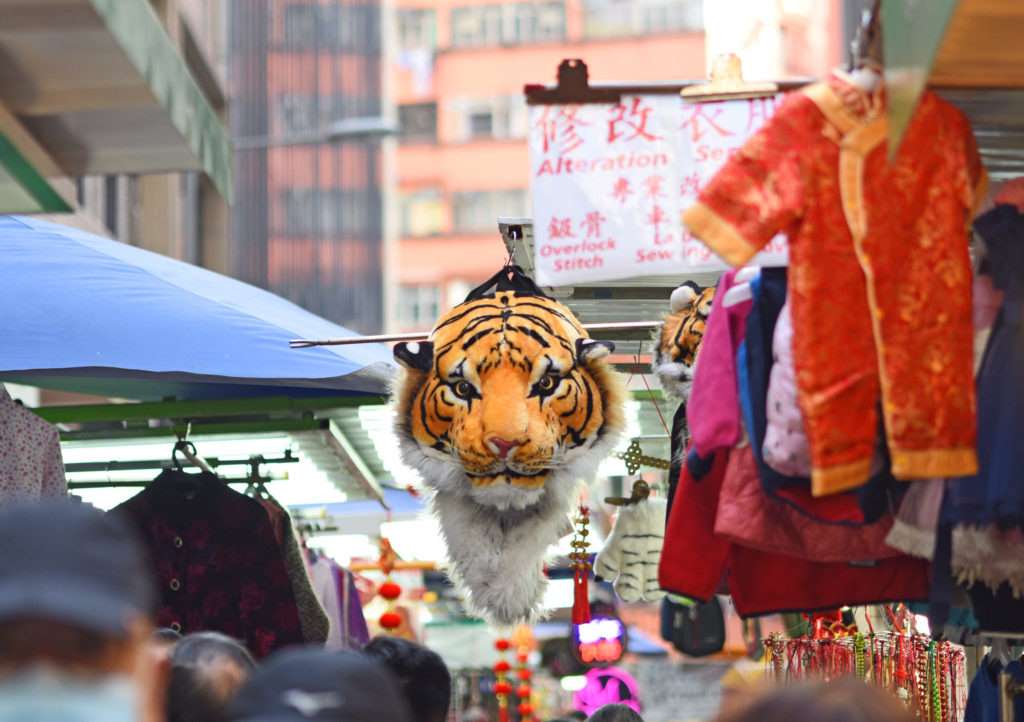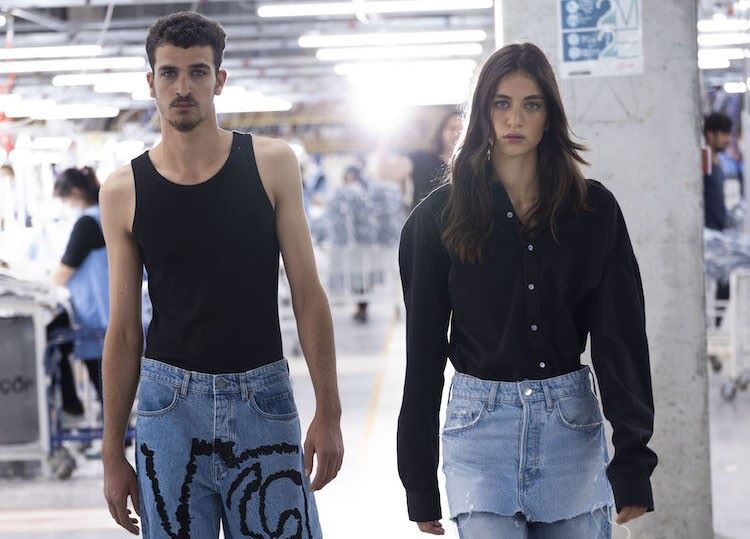
Lectra set to digitise apparel manufacturing process

"Digitisation of the production chain is going to dramatically transform the entire apparel manufacturing space, believes Holger Max-Lang, newly appointed MD of Lectra Germany. Talking about the transformational journey over the decade, he said that Lectra is moving strongly in the direction of mobile production lines. For example, there are container solutions that can be integrated into a pop-up store - individual production for local sales, made possible by automation and robotics. The key question will be which functions clothing will assume in the future. Here, two areas are increasingly merging, nanotechnology and the textile industry." Digitisati... Read more
Gap Inc faces challenging times ahead
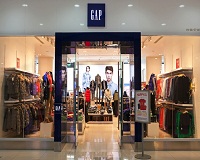
"Following a strong industry retail report of growth of 6.6 per cent and 6.4 per cent in June and July versus the previous year, and stellar results posted other leading like Urban Outfitters, much was expected from the company Gap Inc. However, the performance of the brand Gap left much to be desired. Gap Inc’s comparable sales increased only 2 per cent as against the expected 1.5 per cent, while comparable sales of the Gap as a brand fell 5 per cent against the expected decline of 2.3 per cent. However, the growth of company was led by Old Navy, followed by Banana Republic as these brands performed in-line with estimates. As per analysis of Forbes, the following f... Read more
Global home textiles market registers robust growth

"As per latest US customs data, the country’s imports of home textiles and made-ups grew at a robust 7.7 per cent to reach 8,740 million sq. mt. during the January-May 2018 period. Import of made-ups and home textiles of man-made fibres grew 10 per cent to reach 6,093.6 million sq. mt. In contrast, cotton made-ups and home textile imports grew by 1.6 per cent to reach 2,375.5 million sq. mt." As per latest US customs data, the country’s imports of home textiles and made-ups grew at a robust 7.7 per cent to reach 8,740 million sq. mt. during the January-May 2018 period. Import of made-ups and home textiles of man-made fibres grew 10 per cent to reach 6... Read more
Luxury brands and fast fashion driving Spanish apparel market

Portugal seems to be on the road to recovery with a GDP growth rate of 2.8 per cent in 2017. This is the decade-high growth rate clocked by Portugal on the back of expanded private investment and increased consumer spending. The major growth factor seems to be tourism welcoming close to 7.1 million visitors in July 2017 alone, according to The National Statistics Institute. While Spanish luxury is dominated by consumers from China, Russia and the US — who come to purchase pieces at a lower cost than their home countries — the high net-worth clients in Portugal are often Angolans, a former colony. This aspect has fueled the opening of new ... Read more
Bangladesh RMG sector needs to focus on its intrinsic advantages

"Bangladesh’s competitiveness in global woven garment exports is under threat owing to increased dependence on fabrics import and a lack of proper policy on energy supply. As per Export Promotion Bureau (EPB), export earnings from woven garments saw a 2.35 per cent decline in the last fiscal to $14.39 billion. Export earnings from woven garment products recorded a 2.35 per cent decline in the last fiscal year to $14.39 billion. On the other hand, it posted 4 per cent growth in the first half of the current fiscal to $7.17 billion." Bangladesh’s competitiveness in global woven garment exports is under threat owing to incre... Read more
Microfactory could be an answer to Industry 4.0
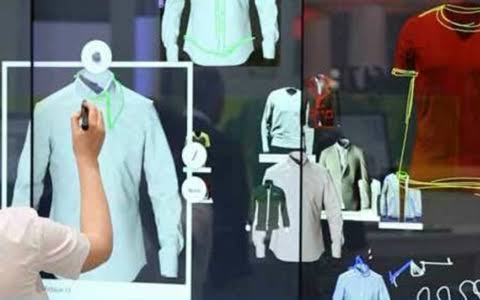
In order to cater to growing demand of consumers in the shortest possible time and least cost, several companies have collaborated to produce a Microfactory. The project is slated to be a step in the direction of Industry 4.0 which will be fully digitised. Alexander Artschwager of the DITF Denkendorf, Microfactory project coordinator, reveals with Microfactory for the apparel industry, one can demonstrate a fully networked, integrated production chain from design through to the finished product. This consistent digital process is a particularly important milestone for the fashion industry on its way to Industry 4.0. The technology approach of Microfactory combines 3D simu... Read more
GSP Plus: Enabling Sri Lanka compete with region’s apparel industry
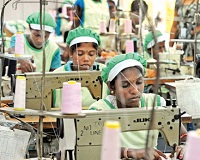
"Sri Lanka faced export revenue losses of around Rs 250 billion after being blackballed and losing its GSP+ concession in August 2010 on allegations of human rights. The country, which according to the International Trade Centre, was much ahead of Vietnam, Pakistan and Cambodia in apparel exports in 2009, trailed them by 2015. Apparel exports in 2015 were $ 3.9 billion for Vietnam, $ 2.9 billion for Pakistan and $ 3.7 billion for Cambodia while Sri Lanka trailed at $ 2.4 billion. The European Union (EU) reinstated the EU GSP Plus facility to Sri Lanka on May 19, 2017. This facility provides Sri Lankan exports level playing field with its neighbours such as Bangladesh... Read more
India, a potent market for technical textiles

"Global technical textile imports are dominated by the US with 17 per cent share; followed by China, Germany and UK with 10 per cent, 8 per cent and 4 per cent, share respectively. The rest of the world accounts for 40 per cent in technical textiles imports. Emerging regions such as the Asia-Pacific and Latin America are presumed to witness rapid growth in multiple segments of technical textiles. China is the largest exporter of technical textile with a share of 24 per cent, followed by the US, Germany, and Republic of Korea with a share of 10 per cent, 9 per cent and 4 per cent respectively." Touted as the sunrise segment for textile industry, technical textile ... Read more
Growing cases of workplace abuse at Asian units of fast fashion brands
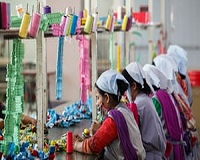
"Tola Moeun, Director, Central Cambodia, an NGO involved in the research, points out abuse was a daily reality for female workers driven to meet unrealistic targets in H&M and Gap’s supply chains. Most cases are not reported due to fear of retaliation. Jennifer Rosenbaum, US director of Global Labour Justice, says the industry must understand gender-based violence as an outcome of the global supply chain structure. H&M and Gap’s fast fashion supply chain model creates unreasonable production targets and underbid contracts, resulting in women working unpaid overtime and working fast under extreme pressure. Unions and many governments agree an ILO conven... Read more
The rise of Ethiopia as the next textile haven
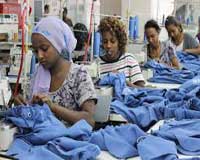
"Ethiopia, the drought-afflicted, landlocked country of 100 million on the Horn of Africa is transforming itself into the lowest rung on the supply chain that pours out fast fashion and five-for-$12.99 tube socks. It is luring companies by tax incentives, state-of-the-art infrastructural investments, and ultracheap labour. Western world who was once outsourcing production to, particularly China and Sri Lanka, are now ramping up production here for Guess, Levi’s, H&M, and other labels. It’s a win-win scenario for both – industrialists as well as the government." Ethiopia, the drought-afflicted, landlocked country of 100 million on... Read more
Cotton import export to see a sudden shift amid US-China trade war
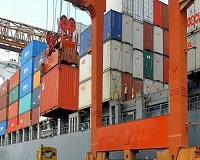
"Amid retaliatory tariff measures, tension between the US and China seem to be increasing and the substantial impact would be on cotton imports and exports. As highlighted by Jon Devine, Senior Economist, Cotton Incorporated, China’s cotton imports have been on the rise and are expected to continue climbing over the next several years now that its government-controlled cotton stockpile has dwindled and because it can’t meet demand with its domestic cotton supply. Devine says, China traditionally has a production deficit between 10-15 million bales. That deficit had been filled by reserves in recent years, but with reserves now lower, that gap should be increas... Read more
It’s time for American retailers to put their act together to boost sales

"A recent Credit Suisse report projected around 8,600 brick-and-mortar stores will be forced to shut in 2017. While retail store visits have drastically reduced in recent years, it is about time for companies to leverage their store presence as a driver for customer acquisition in the digital space. However, in a stark contradiction to this, another research by Smarter HQ found 50 per cent of millennials actually prefer to go to a physical store as their primary means of shopping. In such a situation, a seamless omnichannel presence is what retailers should aim at." A recent Credit Suisse report projected around 8,600 brick-and-morta... Read more
NAFTA 2.0 to change US apparel sourcing norms
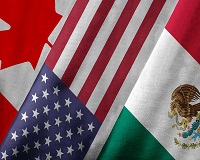
"The US demand raises one big question of whether trade-preference levels (TPL) could be altered, allowing for some non-regional yarns and fabric to be used even though garments were produced within the free-trade area; thus enabling them to receive duty-free status. US representatives, in their previous trade negotiations, had proposed eliminating TPLs. The fact sheet of the US Trade Representative also stated the Trump administration wants to limit the use of non-NAFTA inputs in the textile and apparel trade. Though, the full details of the renegotiated free-trade deal between the United States and Mexico haven’t been revealed yet, and not likely to... Read more
Uncertainty forcing US fashion industry to wait and watch

"That United States Fashion Industry Association (USFIA) tagline -- dedicated to fashion made possible by global trade, is very pertinent today given the kind of policies being pursued by President Trump. As per the US Trade Commission estimates in 2016 textiles and apparel accounted for 9.7 per cent of imports from China, compared to 39 per cent electronic products. However, the impact on the sector is of huge significance not just in the US but also globally. A recent article titled ‘Walmart, Nike Suppliers Put on Notice by China Tariff Threat’ revealed how Chinese and Hong Kong companies Li & Fung with 64 per cent revenue coming from the US, and el... Read more
Rethinking sustainability strategies for apparels & footwear industry
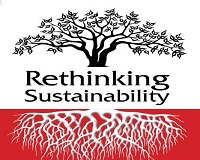
"A recent study ‘Measuring fashion: environmental impact of the global apparel and footwear industries’ highlighted apparel industry has a major impact on climate. Combined, global apparel and footwear industries account for roughly 8 per cent of the world’s greenhouse gas emissions. That’s nearly 4 metric gigatons of CO2-eq, almost as much as the total climate impact of the European Union, according to ClimateWorks Foundation and Quantis, the publishers of the study." A recent study ‘Measuring fashion: environmental impact of the global apparel and footwear industries’ highlighted apparel industry has a major impac... Read more
Sustainable Fashion Blueprint Report 2018 offers framework

"A new 56-page report entitled ‘Sustainable Fashion Blueprint Report 2018’ reviews the state of the industry, analysing the sustainability initiatives currently being implemented, and offers a framework that fashion businesses can follow in their efforts to reduce their negative environmental and social impacts. The report authored by University of Cambridge MBA students Diane Albouy and Olabisi Adesida in partnership with ethical e-commerce marketplace Mamoq." A new 56-page report entitled ‘Sustainable Fashion Blueprint Report 2018’ reviews the state of the industry, analysing the sustainability initiatives currently being implemented, an... Read more
Stretch properties the mainstay in jeans today

"Growing craze for athleisure among millennials is giving tough fight to traditional jeans manufacturers. As Jane Singer, Director and Head of Market Intelligence, Inside Fashion points out the two biggest challenges faced by the denim segment are convincing consumer, who already owns several pairs of jeans, to buy one more pair; and increasing profit margins on products for both retailers and manufacturers. The ‘new consumer’ is more demanding. They read labels, research products before buying, and will return products if they are not satisfied. During a session at Intertextile Shanghai, Singer said new technologies are providing brands with fairly easy ways ... Read more
‘Apparel 4.0’ conference at GTE 2018 puts the limelight on smart factories
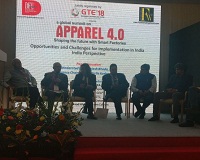
Aimed at increasing productivity, efficiency and creating an ecosystem of smart factories in India, the 26th Garment Technology Expo 2018, attracted about 350 companies and more than 21,000 visitors. The annual Garment Technology Expo’s is the flagship event of GTE New Delhi and is held in spring. This is Indian subcontinent’s largest show for apparel technology. But what was really a star attraction in this edition was the ‘Apparel 4.0’ conference held on the second day of GTE. ‘Apparel 4.0’ is an interpretation and application of Industrial Revolution 4.0 in the apparel technology and appar... Read more
Water conservation techniques, need of the hour for global denim players
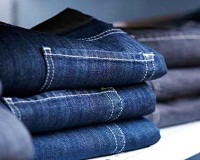
"Lot has been said and debated on the usage of water that is required to produce a single pair of jeans. It takes more than 900 gallons of water to produce a single pair of denim jeans using conventional practices. That’s equivalent to a faucet left running for 15 hours, flushing the toilet 128 times in a row, or five years’ worth of drinking water for one person. All these are startling facts when water has become a scarce commodity. Therefore, water-saving measures are a must for the textile industry. Denim mills and chemical manufacturers have been consciously making efforts to find new water-saving dyes, waterless or near-waterless processes or manufacturi... Read more
Gauging blockchain’s impact on global textile industry

"Blockchain was originally created as a public ledger for bitcoin, the crypto-currency. In the apparel industry, blockchain means more transparency when it comes to what apparel is made of, and where and how it is made. Daniel Newman, Principal Analyst and founding partner, Futurum Research explains blockchain can help lift the veil on supply chain. In a global economy, companies all over the world partner for manufacturing, agriculture, pharma development, etc. But as distance between companies grows, so does the ability to ensure that the products and processes agreed upon are actually followed when the final product is made. Blockchain can help combat fraud by verifyin... Read more
Brexit’s impact and the EU-UK treaty projections

"The UK is likely to get only a trade deal with the EU ‘along the same lines’ of what the EU has concluded with Canada, South Korea and Japan, said EU chief Brexit negotiator Michel Barnier. The UK’s own ‘red lines’ on Brexit (no freedom of movement, no jurisdiction for the European Court of Justice, the right to sign independent UK trade deals with third countries, etc.) ruled out anything more extensive." The UK is likely to get only a trade deal with the EU ‘along the same lines’ of what the EU has concluded with Canada, South Korea and Japan, said EU chief Brexit negotiator Michel Barnier... Read more
US-China tariff war sees newer sourcing destinations emerging strong
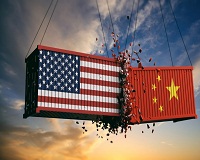
"The escalating US-China trade war is driving many China-based manufacturers and their US clients out of China to other low-cost countries like Vietnam, Cambodia, etc, leather brand Steve Madden is shifting handbag production to Cambodia, Techtronic Industries is moving out to Vietnam while Flex is planning to shift production centres from Mexico to Malaysia. The US has so far levied 25 per cent tariff on $50 billion Chinese industrial goods and is planning to levy tariffs on another $200 billion Chinese exports. It has excluded most consumer goods from the tariff lists, yet many manufacturing and retail executives fear the range of affected products could widen with... Read more
US apparel sourcing strategy moves away from China

"For many US apparel companies, China has long been the only sourcing destination for raw materials. But not anymore as per the fifth annual benchmarking study released by the US Fashion Industry Association, Vietnam and other countries are fast replacing China as major sourcing hubs for the US. The prospect of a looming trade war is compelling US apparel companies to shift production away from China. Though, China still remains the top sourcing destination for the US apparel industry, the country now accounts for only 11- 30 per cent of companies’ total sourcing volume, compared to 30 per cent–50 per cent in the past." For many US apparel companies, ... Read more
Global fast fashion giants set the trend for success in this space

"When it comes to fast fashion, Zara’s place is quite influential and its supply chain success story is one of the few in the industries to reckon with. It has over 2,200 physical stores globally and ventured online relatively late on (in 2010). Its model also differs from other store focused clothing businesses. Moving starkly away from 8 to 12 weeks cycle, Zara updates designs and ships new product to stores on an average two-week cycle, which is quite a daunting task. Design teams crunch masses of daily store data to inform the trends they are designing for. It employs a batch testing approach whereby small runs of designs are tested (in Zara’s case in stor... Read more
US textile makers hail President Trump’s tariff enactment
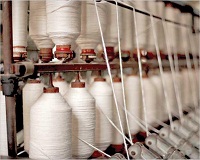
"After opening up trade tariff war with China in recent times, the US textile industry has been witnessing growth waves lately. Aided by Trump’s US-friendly policies, companies are eyeing a fortune in business but it’s said that the industry requirements don’t end here as Michael Woody, CEO, Trans-Tex, a Rhode Island-based maker of lanyards and shoelaces says there is a need to bring in a level playing field and the government needs to put tariffs on end products too that are imported from China. But the other lobby suggests placing duties on finished items is anathema to US retailers and consumer brands that rely on Chinese goods, including $28bn worth ... Read more
VF Corp going strong on sustainability agenda

"VF Corp, which owns 27 brands, including The North Face, Timberland, Vans, Wrangler, Lee and Napapijri, went through a complete transformation in 2016 to become a performance-driven, purpose-led business, which is based on sustainability and consumer-centric retail. Martino Scabbia Guerrini, EMEA President, VF Corp, recently stated there is an intensity and fluidity like never before in retail, and brands must change to embrace the new ‘global agenda’. For VF, the idea is to address the issue of scarcity of resources, and to extend the lifespan of its products to make sure that they make the most of them." VF Corp, which owns 27 brands, including The... Read more
Made in US gaining strength in domestic start-up sector

"A recent report suggests ‘Made in US’ clothing is gaining ground with the government’s thrust and companies’ near-shoring strategies. The focus is on high-quality US craftsmanship priced competitively with imports. This proposition makes perfect sense for manufacturers and sellers as the entire supply chain is in their hands rather than depending on the external factors. These increasingly growing state of affairs is giving rise to ‘grown and sewn in the US’ phenomenon, where e-commerce lets small firms tell a story and sell directly to consumers who have an interest in natural fibres such as cotton and wool, a willingness to invest in... Read more
Microfibers, both natural and synthetic emerge top global pollutants

"These fibers, made from polyester or other popular synthetics, often linger in the environment, just like plastic packaging that coats so many of the world’s beaches. They also bond to chemical pollutants in the environment, such as DDT and PCB. Additionally, the fact that the textiles from which they are shed are often treated with waterproofing agents, stain- or fire-resistant chemicals or synthetic dyes, proves them to be harmful to organisms that ingest them. In fact, we consciously or unconsciously consume microfibers through our food and drink. As recently published studies indicate some microfibers floating in the air could be settling in our lungs. Clothing... Read more
Demand for temperature sensitive clothing on the rise

"Today’s consumers are concerned about their personal comfort, and that may be part of the reason why the current population has been dubbed the indoor generation. A survey by Velux, a window manufacturing company, says on average people spend 90 per cent of their day, or about 21 hours, indoors. According to Peter Foldbjerg, Head, daylight energy and indoor climate, Velux, today’s generation is of indoor people where the only time they get daylight and fresh air midweek is on the commute to work or school. If consumers are constantly in a 70-degree environment, it makes sense for retailers and brands to offer apparel that work at that temperature. And si... Read more
Grassroot innovations to drive US apparel industry forward

"Grassroot initiatives and pathbreaking strategies are fuelling US President Trump’s agenda of ‘Made in US’. For instance, American Giant has launched its first new product of 2018 the ‘Roughneck Pant’ for men and probably its most challenging to stay true to its Made in American sourcing strategy. As Bayard Winthrop, CEO, American Giant points out, the company wanted to make a stretch canvas pant that was both utilitarian and looks great. Producing that material and silhouette in the US is a challenge because the machinery isn’t widely available. It forced them to expand manufacturing footprint to Georgia to make the pants the way they... Read more
Luxury brands focus on faster time to market

"Aiming to reach customers faster and grab market share, global brands such as Gucci, Ralph Lauren, Coach, Helmut Lang, Burberry and Rag & Bone, are working on increased flexibility and faster-paced production windows. Karin Tracy, Head-fashion, luxury and beauty industries, Facebook feels speed is everything right now. For luxury brands, whoever is the fastest right now will have competitive advantage, full stop. They need to step out of the comfort zone of perfection, think about how to move fast and build things to let them do so." Aiming to reach customers faster and grab market share, global brands such as Gucci, Ralph Laure... Read more
Transparency in manufacturing essential for workers’ life
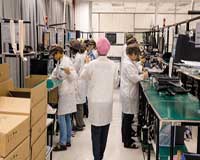
"After the aftermath of series of deadly fire and building accidents in Pakistan and Bangladesh the image underscored a woefully inadequate apparel brands’ approach to worker rights.Brand-label information matters not just for fire and building safety. The $2.4 trillion apparel industry, which predominantly employs women as garment workers, witnesses a host of labor abuses. These range from poor wages to factory owners and managers denying paid maternity benefits or even firing pregnant workers to harassment of union leaders to forced overtime work to workplace sexual harassment." After the aftermath of series of deadly fire and building accidents in Pakist... Read more
Rising Transparency: A sharp increase in AGT’s list of compliant companies
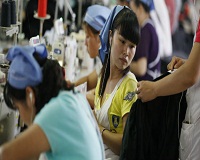
"As per The Dutch Agreement on Sustainable Garments and Textile (AGT), currently there are 4,268 production sites in India where participating companies produced goods in the past year. This sharp rise in the number of production sites is a result of more companies signing up the Agreement, as well as them gaining insight into their supply chain and production sites. A positive step towards transparency, this helps companies gain better understanding of the value chain and enables them to act on the risks identified. With this, NGOs and trade unions can get to the bottom of the prevailing working conditions at production sites raise any occurring issues within the Agreeme... Read more
Indonesia needs to enhance textile competitiveness to aim $75 bn exports by 2030
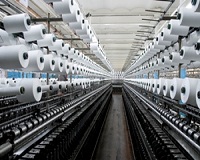
"Indonesia is ranked among the top ten largest textile producing countries. However, the nation is far away from threatening China's dominant position. Whereas China controls about 35 per cent of global textile markets, Indonesia controls only about 2 per cent. The Indonesian government targets to increase the nation’s value of exported textiles and garments to $75 billion by the year 2030, implying that this industry would contribute around 5 per cent to global exports. The recent TheInsiderStories data points out that Indonesia has cheaper labour than other textile producing countries." Indonesia is ranked among the top ten largest textile producing count... Read more
Vietnam: Emerging a strong world trade centre in a tariff-hit global economy
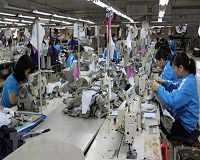
"Nothing is isolated in world economy today. The US government, in its attempt to punish China for unfair trade practices and reduce its $3.75 billion trade deficit, is forcing some of its strongest allies to run for protection. A prominent partner, Vietnam exported around 35 per cent of its goods to China and the United States last year. However, the US-China trade war led to a sharp devaluation of the Vietnamese currency causing a steep decline in its stock markets. Rumors spread about an influx of cheap Chinese consumer goods and the threat of American protectionism spreading in ways that would affect Vietnam’s vital exports. Nearly $5 billion of Vietnamese expor... Read more
Fast fashion forcing US apparel manufacturers to change pace

"Till some years ago, producing clothes in a span of six weeks was a distant dream or rather a challenge. Thanks to fast fashion, this has become a reality today for apparel manufacturers and retailers. And as, Spencer Fung, CEO, Li & Fung, opined in the last couple of years, people started realising they have to speed up. One of the reasons is the consumer has really sped up. And it’s now noticeable if you don’t speed up, you’re dead. It has become possible for the US retailers to match up to the fast-fashion prowess of European competitors such as Inditex SA and H&M. These companies are known for pioneering the fast fashion model by taking flex... Read more
US jeans retailers revamping their denim business

"America’s biggest fashion retailers including Ralph Lauren, Calvin Klein are now looking at a revival of blue jeans while losing out to athleisure wear which has overpowered jeans in recent times. The US Census Bureau recently pointed out last year, imports of elastic knit pants surpassed those of jeans for the first time ever. To bring back the vigour, these companies have renewed their thrust on denim manufacturing lately. The biggest reason for such a deterring performance is stagnant designs or lack of uniqueness. While microtrends such as cropped flares and ’80s throwbacks pop up here and there but the skinny jean has remained the dominant style for more... Read more
India needs to learn a lesson from China to sustain growth
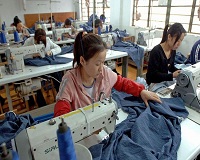
With China according priority to the textile sector in the late 1970s, there’s no looking back and the country has been sustaining pole position as the top global exporter. Even as India is trying hard to catch up, however, the efforts seem to be futile. For example, between 2001 and 2015, India’s textile and apparel exports nearly quadrupled from $10.7 billion to $41 billion. It actually doubled to $20 billion in 2005 from 2001 and then took another 10 years to touch $40 billion. During this time, China’s textile and apparel exports rose from $50 billion to nearly $200 billion. In the global market, China enjoys a 40 per cent marke... Read more
Automation taking centerstage in mass manufacturing
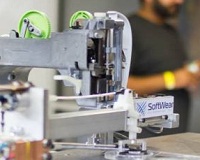
"Technology and automation has taken over manual work in the garment industry these days. From harvesting cotton in the farms, to making thread, then weaving it into cloth in looms, followed by the stage of printing, the textile manufacturing cycle has largely been automated in the past two hundred years. Softwear Automation, a company based in Atlanta, US, has built an entire assembly line manned by robots that can pick a piece of garment, arrange it properly and then sew it. This technology is called the sewbot. While picking up a piece of fabric by a robot used to be a big achievement, today it can perform almost each and every task." ... Read more
Blue Jeans Go Green Programme gives new lease of life to used denim
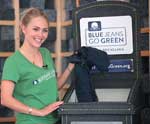
When denim is worn out, consumers tend to dump old clothes but now denim makers have a new way of reusing used denim. The Blue Jeans Go Green denim recycling programme gives new purpose to old denim. Roian Atwood, Director – Sustainability, Wrangler points out that in 2017, the company contributed more than 43,000 pounds of denim, which produced over 80,000 sq. ft of insulation. In 2006, Cotton Incorporated started the program to help divert denim from landfills. Since then, more than two million pieces including jeans, shorts, skirts, jackets, dresses, and shirts, have been collected and turned into housing insulation. UltraTouch Denim Insulation is created throug... Read more
New tech tools driving companies’ sustainability goals

Growing consumer awareness on eco clothing is forcing companies to take the sustainable route. The proof is the various initiatives taken up by associations and companies such as Fashion Positive, a part of the Cradle to Cradle Products Innovation Institute, and the H&M Foundation, through its Global Change Award that honors apparel innovation in the areas of waste, digitisation and climate positive advancements, have nurtured a burgeoning interest in conscious design that considers all aspects of apparel’s impact while investigating new ways to create clothing from alternative materials. Growing consumer awareness on eco clothing is forcing... Read more
Indo-US trade relations facing troubled times
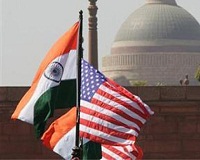
"Though India is still growing steadily amid the unexpected US trade proposition, industry might get bruises if the situation doesn’t turn up in India’s favour, fear analysts. President Trump’s recent amendments in trade policy are impacting global economic growth negatively. As counteractive measure, other countries have started imposing retaliatory tariffs, followed by counterthreats by the US, which has greatly raised concerns over tit-for-tat protectionist measures. Expert say, an all-out trade war will prove detrimental to global markets. Global economic growth hinges on the free movement of goods. If countries revert to large-scale nationalism, it ... Read more
Tech offers an edge over others in fashion retail

"While designers are busy offering trendy clothes every season but is that enough? In the millennium it’s the tech edge that will help fashion retailers win over consumers. At a recent conference, Tommy Hilfiger reflected on the importance of technology. In fact they were the first to do a chatbot with Facebook (Messenger)…and believe in Snap:Shop (an app that lets consumers instantly shop items from the moment models hit the runway). In a recent advancement, Hilfiger has a digital showroom that has no garments but allows buyers to view a big screen that they can also view from home." While designers are busy offering tr... Read more
‘India could not seize opportunity when China vacated the space’: HKL Magu

“GST is a great initiative. A single tax has subsumed other taxes,’ says H K L Magu, Chairman, AEPC, praising the government’s efforts and adds, “But there were problems in implementation. Exporters suffered since their funds were blocked and they were unable to pay suppliers on time. Suppliers don’t give advance, since they can’t carry them forward for an indefinite period.” “GST is a great initiative. A single tax has subsumed other taxes,’ says H K L Magu, Chairman, AEPC, praising the government’s efforts and adds, “But there were problems in implementation. Export... Read more
EU’s changing trade landscape, trade within member states rules
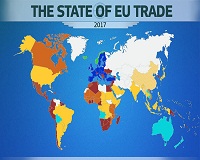
"As per, in 2017, the United States with €631 billion (16.9 per cent) and China €573 billion (15.3 per cent) continued to be the two main goods trading partners of the European Union (EU), well ahead of Switzerland (€261 billion,), Russia (€231 billion), Turkey (€154 billion) and Japan (€129 billion). These figures reflect an interesting proposition. After recording significant and almost continuous fall until 2011, the share of the United States in EU total trade in goods has increased nearly 18 per cent in 2015 and 2016, before decreasing again slightly in 2017." As per, in 2017, the United States ... Read more
Recycling clothes catches up in the apparel retail industry
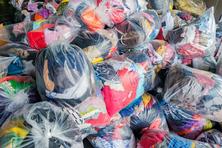
Earth Day once more highlights the importance of buying clothes responsibly. As per the US Bureau of Labor Statistics Stats in 1977, clothing accounted for 6.2 per cent of US household spending; now, each households spends half as much (3.1 per cent). Earlier, retailers used to take time to introduce clothes to their floors and put them on sale at the end of the season. These days, as a McKinsey report suggests, stores like Zara offer 24 new collections per year; H&M offers 12-to-16 and refreshes them weekly. And it’s not just fast fashion retailers who are churning out new collections quickly. Fear of missing out has led mainstream retailers to ... Read more
Trends that will define the fashion agenda in 2018

"The McKinsey Global Fashion Index estimates the global fashion industry sales to grow by 3.5 to 4.5 per cent in 2018. But this growth is not spread evenly across all regions or segments. Economic growth is shifting from mature regions in the West to emerging markets in the South and East. As per the McKinsey FashionScope, by 2018 over half of apparel and footwear sales will originate outside of Europe and North America. Rapidly growing cities in emerging markets are particularly important growth centres for the fashion industry." The McKinsey Global Fashion Index estimates the global fashion industry sales to grow by 3.5 to 4.5 per ... Read more
Trump’s tariff policy to hamper domestic apparel industry dynamics

"The world is concerned with President Trump’s tariff plans. The US has also announced 25 per cent tariff on steel imports and 10 per cent on aluminum for countries other than Canada and Mexico. Additionally, there are plans to impose around 45 per cent tariff on goods imported from China to suppress the country’s intellectual property problems. Companies will pay taxes at the border for the goods they are bringing in, which will make the products more expensive, and consumers have to pick up the tab. Apparel industry, already operating on razor thin margins for most goods cannot afford such high tariffs." The world is concerned with Presi... Read more
Denim regaining its lost charm globally with 6 % upward CAGR till 2023

"Denim industry, valued at more than $57 billion, will experience an annual growth rate upward of 6 percent till 2023, according to the recent P&S Market Research report. The reason for this stupendous growth is the innovative and advanced status of manufacturers and buyers as they look for denim that does more while leaving a lesser impact on the environment. Lot many countries are making a growth headway into denim. Here’s a look at them:" Denim industry, valued at more than $57 billion, will experience an annual growth rate upward of 6 percent till 2023, according to the recent P&S Market Research report. The reason for this stupendous growth is ... Read more
- 1
- 2
- 3
- 4
- 5
- 6
- 7
- 8
- 9
- 10
CMAI FAB Show 2024 wraps up successfully, boosting textile industry
The Fabrics, Accessories & Beyond Show 2024 (FAB Show 2024), organized by the Clothing Manufacturers Association of India (CMAI), concluded... Read more
US retail sales on the rise, but fashion sector growth murky
American consumers are opening their wallets again, with retail sales experiencing a modest uptick in recent months. According to the... Read more
The Fast Fashion Conundrum: Profits soaring, sustainability stalling
The story of Shein's soaring profits in 2023 presents a fascinating paradox. While a growing number of consumers, particularly millennials... Read more
Wall Street and the Seduction of Sexy Calvin Klein Ads: Hype or performance boos…
The recent Calvin Klein campaign featuring Jeremy Allen White in his skivvies has set the fashion world abuzz. But can... Read more
Looming Iran-Israel conflict threatens to unravel global apparel trade
The already fragile global garment industry faces fresh challenges as tensions escalate between Iran and Israel. This adds another layer... Read more
Fabric Stock Services: A rising trend but not a replacement
The fashion industry is notorious for waste. Unsold garments and excess fabric often end up in landfills. Fabric stock services... Read more
CMAI’s FAB Show 2024 inaugurated with industry giants
The 4th edition of the Fabrics Accessories & Beyond Show 2024 (FAB Show), hosted by the Clothing Manufacturers Association of... Read more
Asian Apparel Exports: A tale of four tigers, one lagging behind
The apparel industry in Asia presents a fascinating picture of contrasting fortunes. While Bangladesh, Vietnam, and Sri Lanka have seen... Read more
Roberto Cavalli: A legacy of bold prints and unbridled glamour
Roberto Cavalli, the iconic Italian designer who passed away on April 12, 2024, leaves behind a rich legacy. Cavalli was... Read more
Candiani & Madh unveil first regenerative cotton jeans
In a move towards sustainable fashion, Swedish denim brand Madh has partnered with Italian producer Candiani Denim to introduce the... Read more








